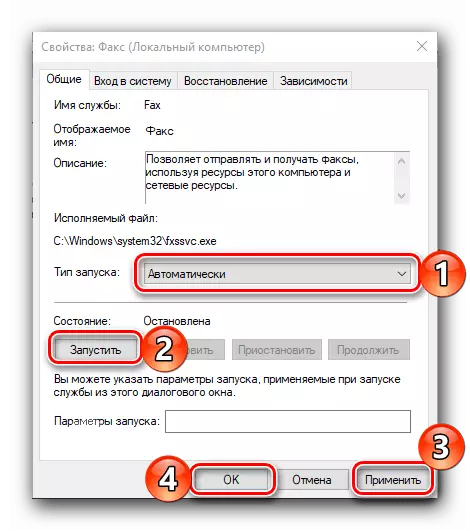
In any operating system, and Windows 10 is no exception, in addition to visible software, there are various services that work in the background. Most of them are really necessary, but there are also those who are not important, but at all are useless for the user. The latter can be completely disabled. About how and with what specific components it can be done, we will tell us today.
Deactivation of services in Windows 10
Before proceeding to the disconnection of certain services operating in the operating system environment, it should be understood why you do this and are ready to put up with possible consequences and / or correct them. So, if the goal is to increase the performance of the computer or eliminate the freezers, special hopes do not have to feed - the increase if it will be, then only a little careful. Instead, it is better to take advantage from the thematic article on our website.
Read more: How to improve computer performance on Windows 10
For our part, we basically do not recommend deactivating any system services, and certainly not worth it to make newcomers and inximately users who do not know how to correct the problems in Windows 10. Only if you are aware of the potential risk and Give a report in your actions, you can go to the study below. We also launch how to run the "service" snap and disable the component that seems unnecessary or really is such.
- Call the "Run" window by pressing "Win + R" on the keyboard and enter the following command to its string:
Services.msc.
Click "OK" or "ENTER" for its execution.
- Having found the necessary service in the list of the list, or rather the one that stopped being such, click on it with the left mouse button twice.
- In the dialog box that opens in the Run Type drop-down list, select "Disabled", then press the "Stop" button, and then "Apply" and "OK" to confirm the changes.



Important: If you mistakenly disabled and stopped the service, the work of which is necessary for the system or personally for you, or its deactivation entailing problems, enable this component, you can simply select the one described above - just select the appropriate "Startup type" ("Automatically" or "Manually" ), click on the button "Run" And then confirm the changes made.

Services that can be disabled
We bring to your attention a list of services that can be deactivated without harm to stability and correct operation of Windows 10 and / or some of its components. Be sure to read the description of each element to understand whether you use the functionality that it provides.- DMWAppushService - WAP Push-Message Routing Service, one of the so-called Microsoft surveillance elements.
- NVIDIA STEREOSCOPIC 3D DRIVER SERVICE - If you do not see the stereoscopic 3D video on your PC or laptop with a graphics adapter from NVIDIA, this service can be disabled.
- Superfetch - can be disabled if SSD is used as a system disk.
- The Windows Biometric Service is responsible for collecting, comparing, processing and storing biometric data on the user and applications. It works only on devices with fingerprint scanners and other biometric sensors, so the rest can be disabled.
- Computer browser - can be disabled if your PC or laptop is the only device on the network, that is, not connected to the home network and / or other computers.
- Secondary login - If you are the only user in the system and there are no other accounts in it, this service can be disabled.
- Print Manager - Disable itselves only if you do not use not only the physical printer, but also virtual, that is, do not export electronic documents to PDF format.
- Share Internet connection (ICS) - If you do not distribute Wi-Fi from your PC or a PC, and it is not necessary to connect to it from other data exchange devices, the service can be disabled.
- Work folders - provides the ability to set up access to data within the corporate network. If you do not enter this, you can turn off.
- Xbox Live network service - if you do not play xbox and in the Windows version of the games for this console, the service can be turned off.
- Hyper-V Remote Work Table Virtualization Service is a virtual machine integrated into the corporate versions of Windows. If you do not use this, you can safely deactivate this service specifically, and the following, opposite which we set the mark "Hyper-V" or this designation is in their name.
- The geographical location service - the name speaks for itself, with the help of this service the system tracks your location. If you consider it unnecessary, you can disable, but remember that after that even the standard Weather application will work incorrectly.
- The sensor data service is responsible for processing and storing the information obtained by the system from the sensors installed in the computer. In essence, it is a banal statistics that does not represent interest for an ordinary user.
- Sensor service - similar to the previous item, can be disabled.
- Service Completion Service as a guest - Hyper-V.
- Client license service (CLIPSVC) - after turning off this service, applications integrated into Windows 10 Microsoft Store may not work, so be careful.
- Alljoyn router service is the data transfer protocol that the ordinary user will most likely be required.
- Sensor monitoring service - similar to the service of sensors and their data, can be deactivated without harm to the OS.
- Data exchange service - Hyper-V.
- Net.TCP ports sharing service provides the possibility of sharing TCP ports. If you do not need this, you can deactivate the function.
- Bluetooth support service - can only be disabled if you do not use Bluetooth-compatible devices and do not plan to do this.
- Pulse Service - Hyper-V.
- Hyper-V virtual machine sessions.
- Hyper-V time synchronization service.
- BitLocker disk encryption service - If you do not use this Windows function, you can turn off.
- Remote Registry - Opens the ability to remotely access the registry and can be useful for the system administrator, but the ordinary user is not needed.
- Application ID - identifies previously blocked applications. If you do not use the AppLocker function, you can safely disable this service.
- Fax is extremely unlikely that you use fax, so you can safely deactivate the service needed for its work.
- Functional features for connected users and telemetry are one of the many "tracking" services of Windows 10, and therefore its disconnection will not entail negative consequences.
On this we will finish. If, in addition to working in the background of services, you are also worried about how allegedly Microsoft is following the users of Windows 10, we recommend additionally familiar with the following materials.
Read more:
Disconnecting the surveillance in Windows 10
Software shutdown programs in Windows 10
Conclusion
Finally, once again we will remind - you should not mindlessly disconnect all Windows 10 services imaginably. Do it only with those of them that you really don't need, and whose purpose you are more than understandable.
See also: Disable unnecessary services in Windows
